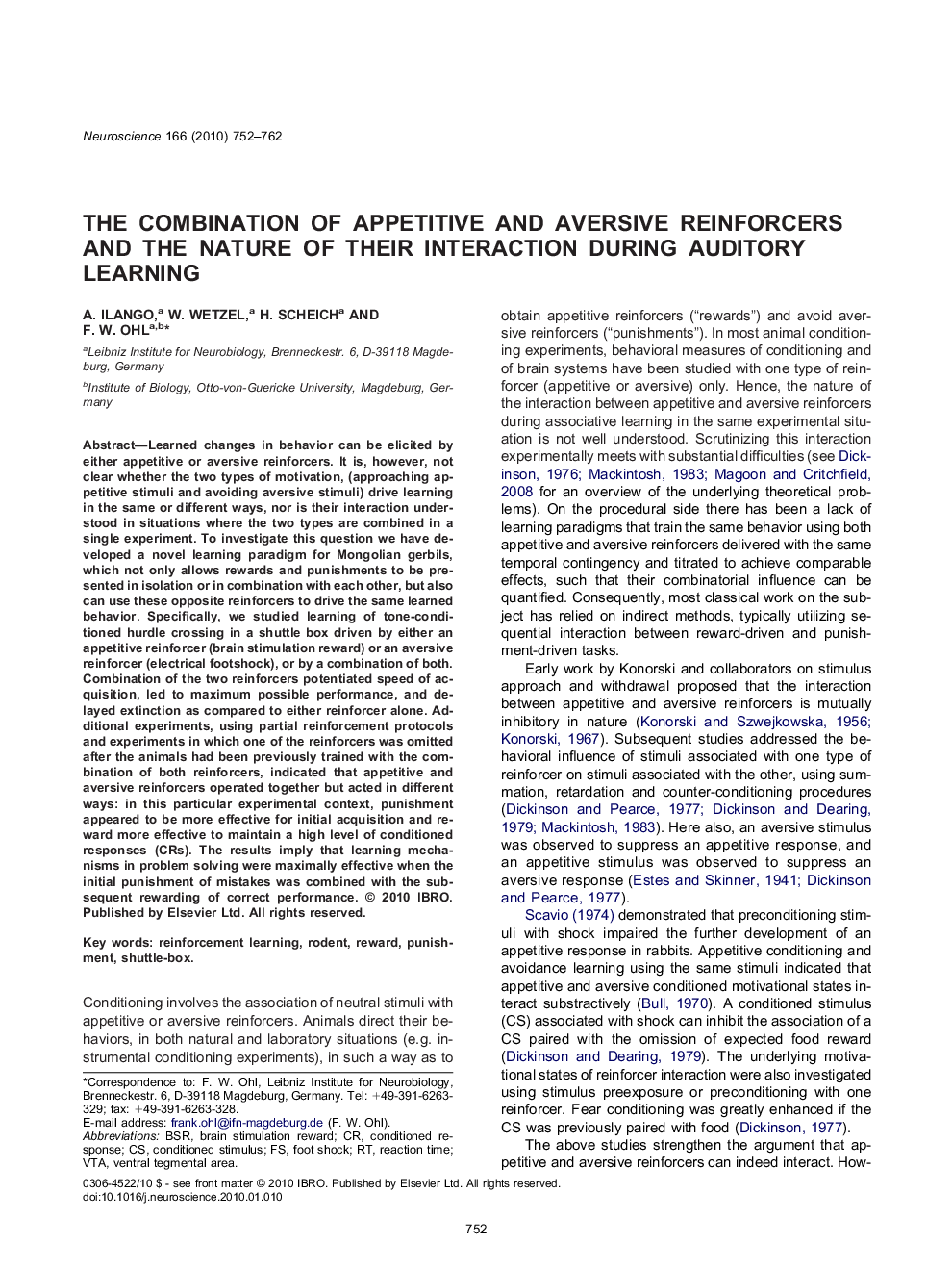| Article ID | Journal | Published Year | Pages | File Type |
|---|---|---|---|---|
| 4339508 | Neuroscience | 2010 | 11 Pages |
Learned changes in behavior can be elicited by either appetitive or aversive reinforcers. It is, however, not clear whether the two types of motivation, (approaching appetitive stimuli and avoiding aversive stimuli) drive learning in the same or different ways, nor is their interaction understood in situations where the two types are combined in a single experiment. To investigate this question we have developed a novel learning paradigm for Mongolian gerbils, which not only allows rewards and punishments to be presented in isolation or in combination with each other, but also can use these opposite reinforcers to drive the same learned behavior. Specifically, we studied learning of tone-conditioned hurdle crossing in a shuttle box driven by either an appetitive reinforcer (brain stimulation reward) or an aversive reinforcer (electrical footshock), or by a combination of both. Combination of the two reinforcers potentiated speed of acquisition, led to maximum possible performance, and delayed extinction as compared to either reinforcer alone. Additional experiments, using partial reinforcement protocols and experiments in which one of the reinforcers was omitted after the animals had been previously trained with the combination of both reinforcers, indicated that appetitive and aversive reinforcers operated together but acted in different ways: in this particular experimental context, punishment appeared to be more effective for initial acquisition and reward more effective to maintain a high level of conditioned responses (CRs). The results imply that learning mechanisms in problem solving were maximally effective when the initial punishment of mistakes was combined with the subsequent rewarding of correct performance.
